100th Anniversary Great Nave Tour at the Cathedral of St. John the Divine
Celebrate the 1925 construction of the stunning nave inside the world's largest Gothic cathedral!


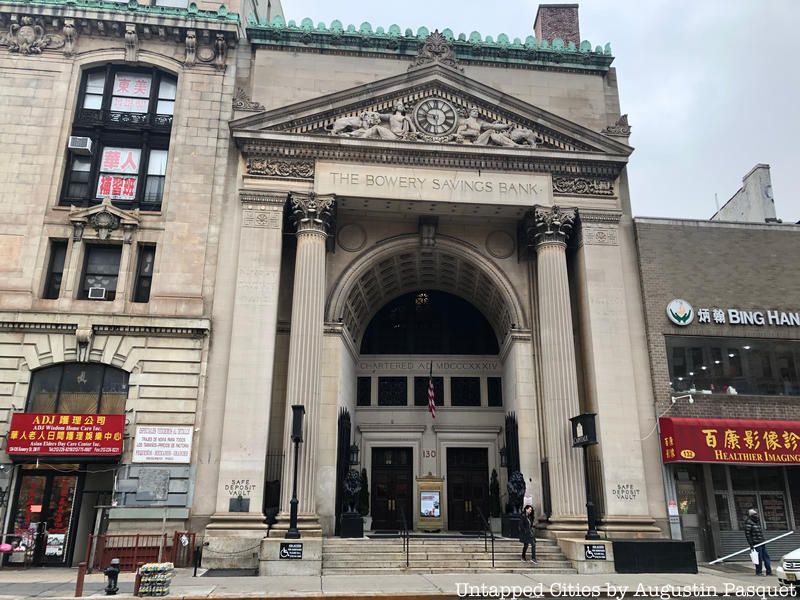
We’ve been on a kick lately tracking down re-purposed buildings in NYC, finding out the new uses for churches, synagogues and psychiatric asylums. Today, we’re on to former banks that have since been occupied by businesses that are largely distinct from the financial industry.
96th Street CVS Pharmacy (743 Amsterdam Ave, Upper West Side)
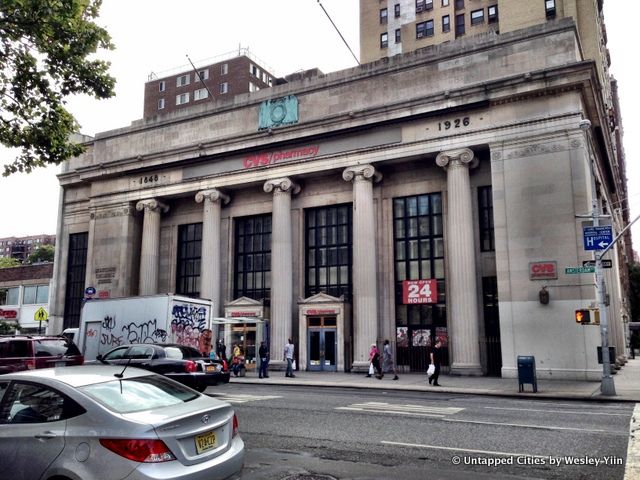
You can barely make out the inscriptions on both sides of the bank’s seal.
This landmarked building was once a branch of the East River Savings Bank. Built between 1926 and 1927, its design is Classical–simple and conservative while still recalling the grandeur of Greek and Roman temples. Near the top of its two facades are quotations by Thomas Jefferson, Abraham Lincoln, and Teddy Roosevelt on the virtues of saving money. The bank is noteworthy for discovering a marked bill that was revealed as a ransom note in the Lindbergh kidnapping. In 1995, the building became occupied by a different bank: The Marine Midland Bank. Then, three years later, the building was converted into a CVS pharmacy.
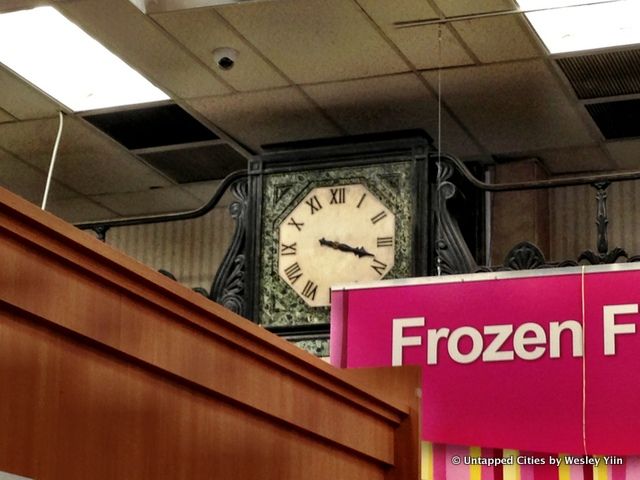
A cool clock hidden behind the store’s frozen foods
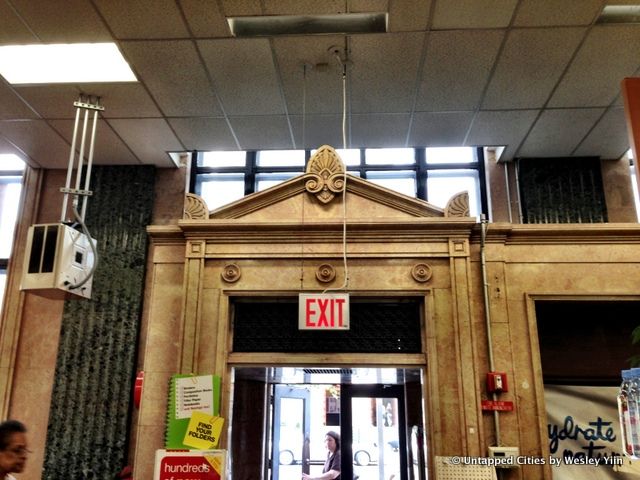
Pretty fancy, for a drugstore entrance.
One Hanson Place (1 Hanson Pl, Fort Greene, Brooklyn)

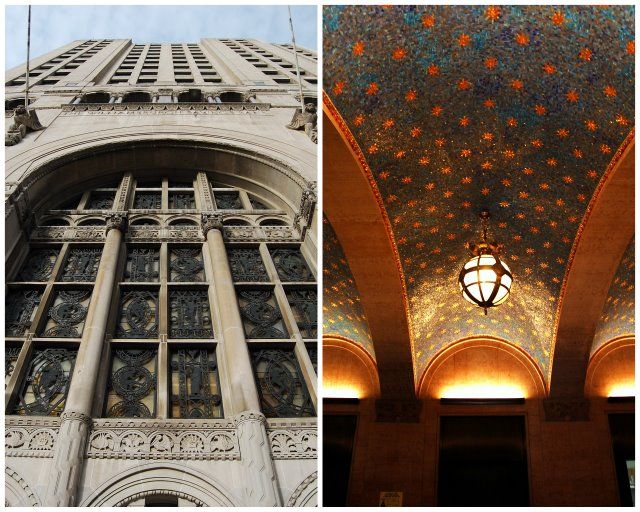
Photos by Michelle Young
The Williamsburg Savings Bank Tower, whose lobby was formerly home to the Brooklyn Flea, was once the tallest building in Brooklyn. Chief Architect Robert Helmer designed the building to be a “cathedral dedicated to the furtherance of thrift and prosperity,” which explains its gorgeous facade and lobby mosaics. In later years, many dentists’ offices occupied the building before it was officially converted into luxury condominiums. The lobby and vault spaces have been branded “Skylight One Hanson” and can be rented for events and movie shoots. In 2011, Kanye West held a star-studded show in the lobby.
The building was originally intended to be the headquarters of the Williamsburgh Savings Bank–and we once did an exploration why “Williamsburgh” has an “H” at the end in some parts of Brooklyn.
14th Street CVS Pharmacy (272 Eighth Ave, Chelsea)
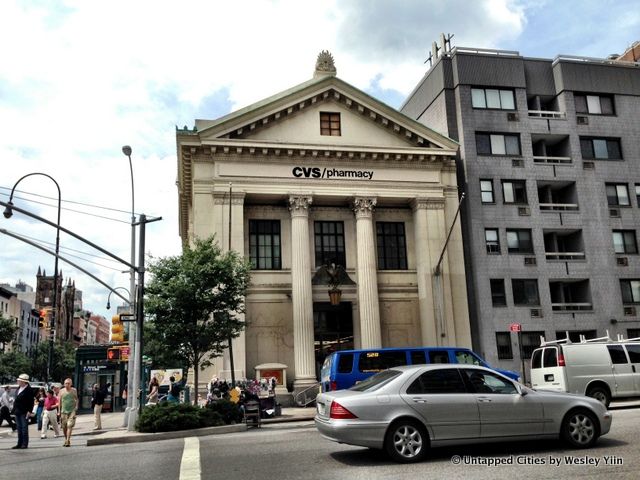
Does CVS have an obsession with former banks? Or is it a marketing strategy? Former investment analyst Arvind Murthy of Bear State Coffee Merchants tells us that “larger spaces, glossier interiors, and a heightened feeling of safety and surety might contribute to more sales.” This address first held the Rose Hill Savings Bank from 1854 until it was renamed the New York Savings Bank in 1862. Following the Financial Panic of 1893, the bank was rebuilt (in a style similar to the East River Savings Bank’s) to convey strength and solidarity. Almost a century later, in the late 1980s, the Central Carpet took over the building. They moved out, and in 2005, Balducci’s moved in. Five years later, the building finally became home to its current occupant, CVS.
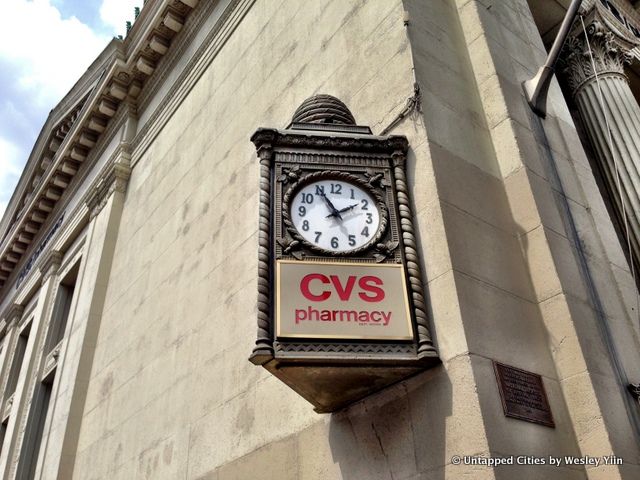
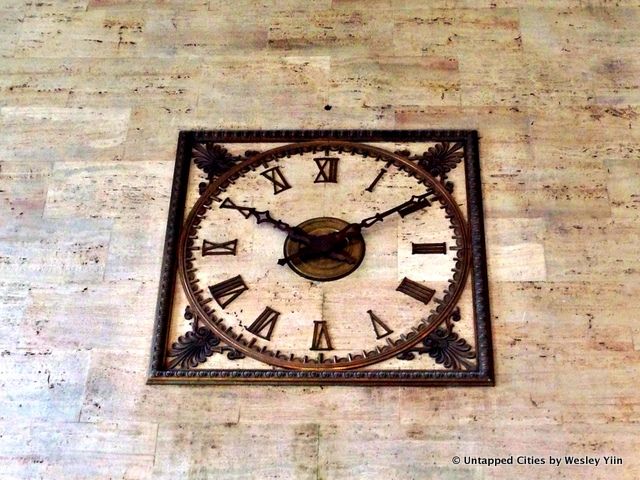
Clocks seemed to be prevalent in both of these bank-turned-CVS’s.
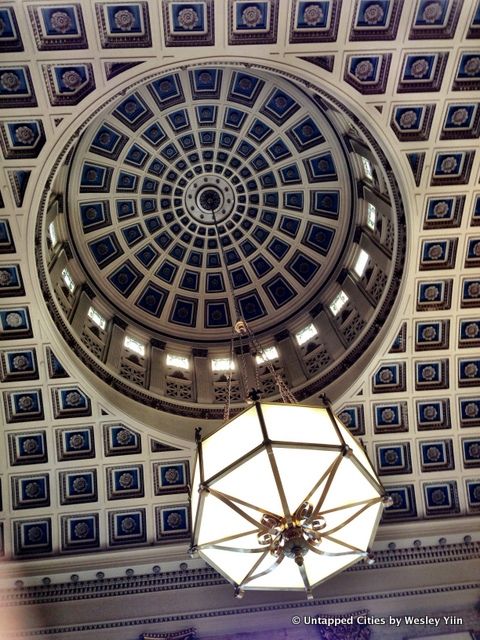
An amazing coffered ceiling, dome and light fixture
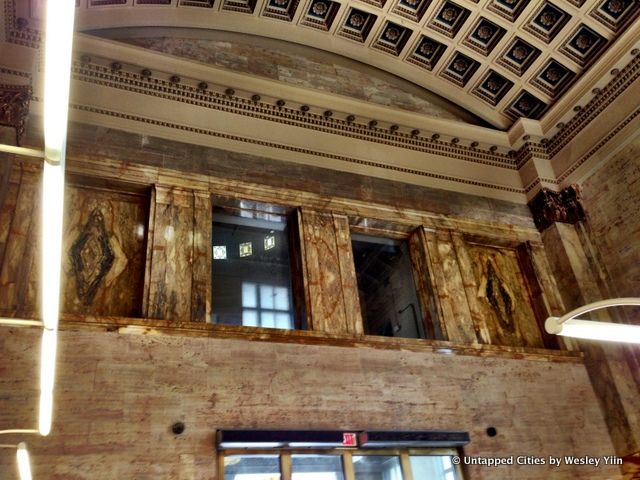
The bank’s second floor used to house offices. Now the space looks emptied out.
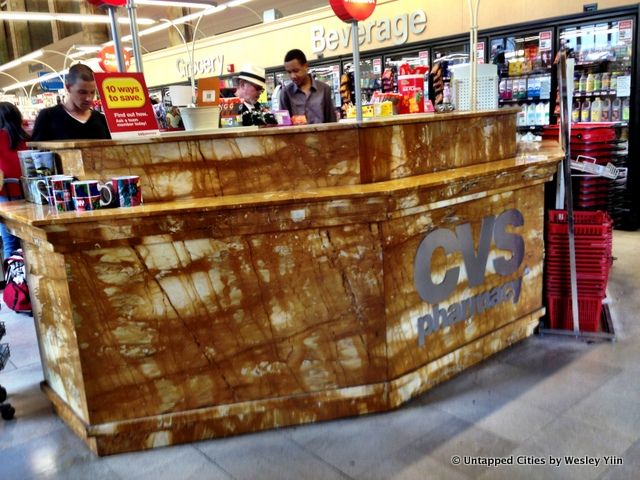
Not your average check out counter
Coach Scot’s Main Street Sweets (559 Main Street, Roosevelt Island)
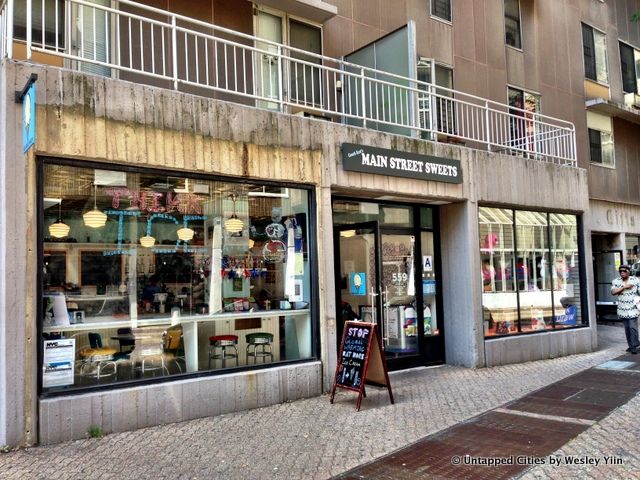
Does this look like a former credit union to you?
We stumbled upon this little ice cream parlor and candy store on Roosevelt Island’s Main Street, and then later discovered its roots in finance. The space was once used by Montauk Credit Union before being repurposed in 2005 for the office of nonprofit organization Orphans International. Unlike the other entries on this list (whose buildings are either officially or unofficially recognized landmarks), Main Street Sweets ended up gutting the entire place and making it more colorful and family-oriented. A flip book on the store’s window counter details the transformation process, complete with pictures.
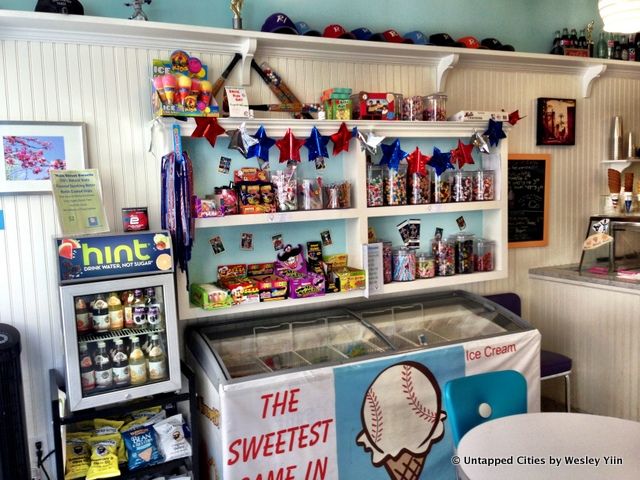
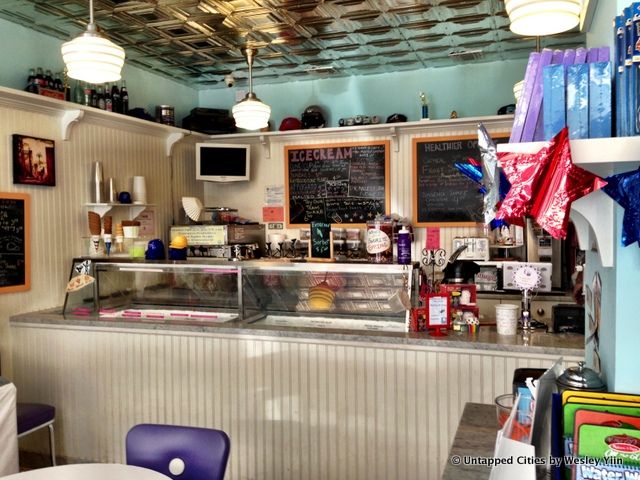
510 Fifth Ave (at 43rd Street, Midtown)
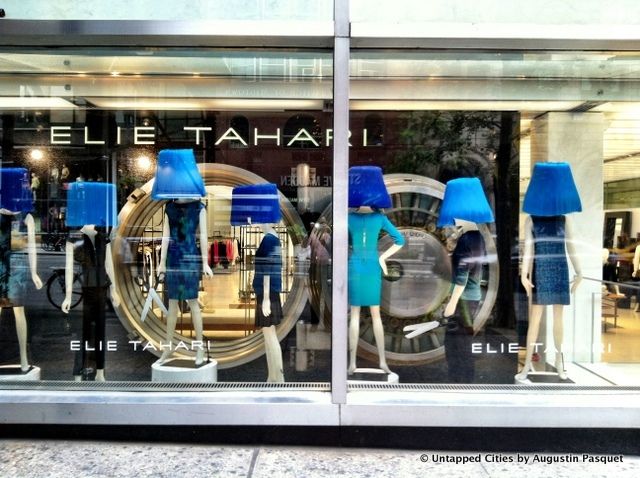
An experimental pop-up boutique by designer Elie Tahari recently opened at 510 Fifth Ave, literally a landmark address. The Gordon Bunshaft building has twice been landmarked, for its exterior (1979) and interior (2011), and dates back to the 1950s opening of a Manufacturers Hanover Trust Bank branch. Unlike the first three banks on our list, Bunshaft’s creation represents a move away from the fortress-like template, opting instead for a space with more transparency, flow, and openness. The building served other banks like JP Morgan Chase, but today its spaces are mostly used for retail. Tahari actually keeps his studio and office right here at 510 Fifth Ave.
The Clock Tower at Long Island City (29-27 41st Ave, LIC, Queens)
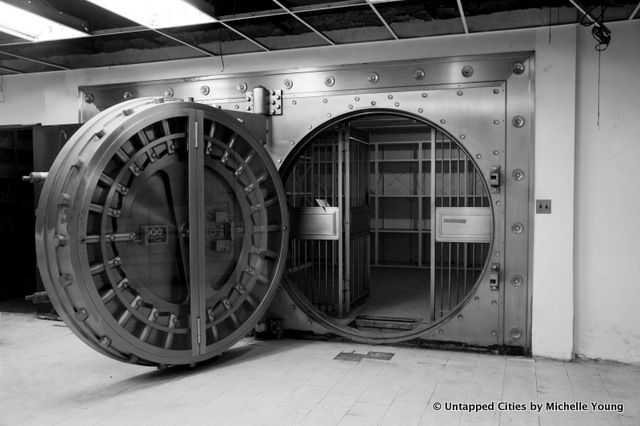
This tower, Queens’ first skyscraper, opened in 1927 containing the abandoned Bank of Manhattan. The company actually dates back to 1799, when it was founded by Aaron Burr. Originally called The Manhattan Company, it held the exclusive rights to supply water to New York City. It went on to become Chase Manhattan Bank in the 1950’s, then the ubiquitous JP Morgan Chase. By the 1980’s, the clock had cracked, and the bank moved out, leaving the building’s historic bottom floors abandoned for over two decades.
From December 2012 to March 2013, this space was repurposed by No Longer Empty for an art exhibition entitled “How Much Do I Owe You?” for which Untapped Cities with the official media sponsor. The upper floors are currently occupied by law offices, and as part of a redevelopment project by the EDC, office units on the ground floor are being advertised.
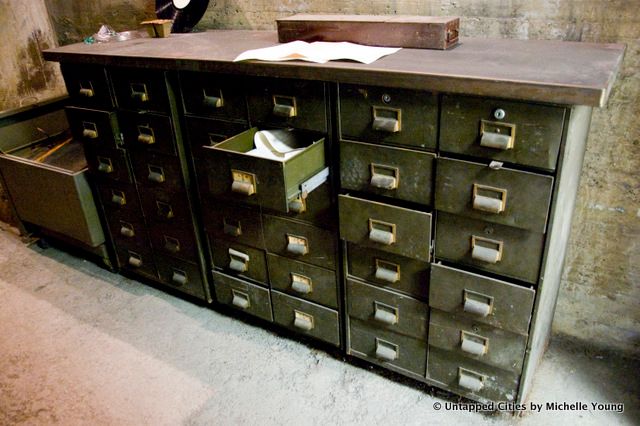
Nickel Spa and The Bank Building (77 Eighth Ave at 14th Street)
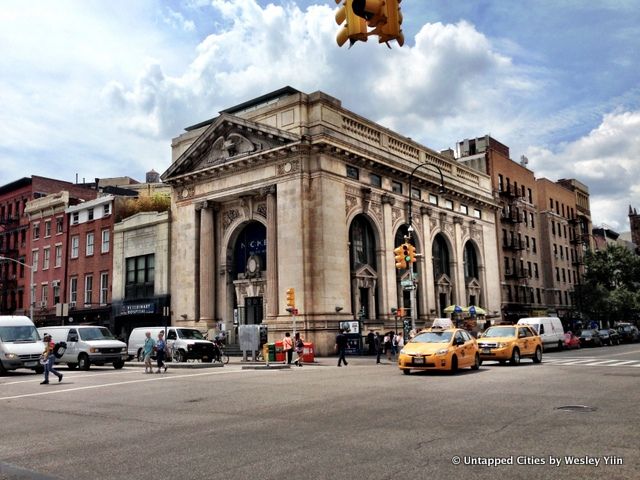
Although it is now shared between condominiums and a men’s spa, this New York City Landmark (1988) was built in 1907 for the New York County Bank. Designed with both Classical and Beaux-Arts influences, the building sports Corinthian columns, false entrances, and caduceuses (a medical symbol) to reference Mercury, the Roman God of Commerce. As the building faced the New York Savings Bank (now a CVS, see above), it seemed as if the two buildings and banks were competing both in business and style. The County Bank was the first to be lost, however, when it was absorbed by the Manufacturers Hanover Trust in the 1930’s. The space was briefly used as a theater in the mid-90’s, but then was converted to its current dual functions in 1999.Note: None of the four “entrances” on the right-side facade are real!
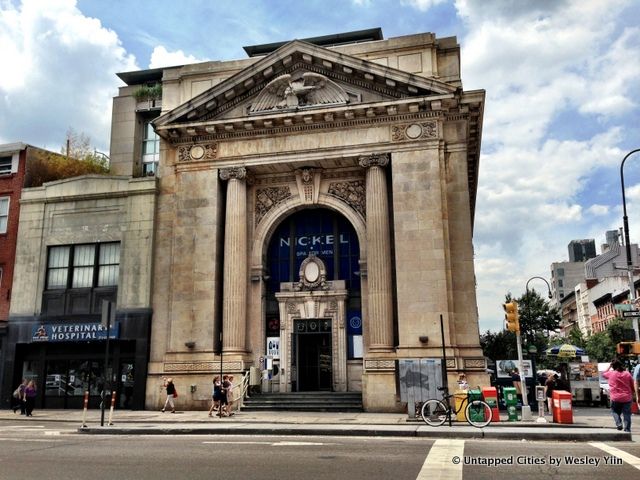
Apple Bank (2112 Broadway at 73rd Street)
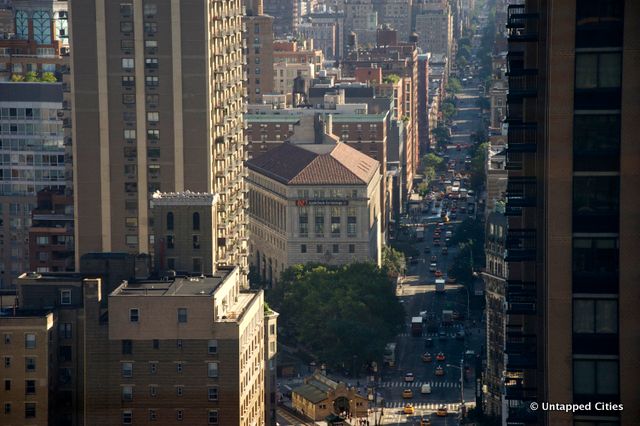
The top four floors of the Florentine palazzo-inspired Apple Bank on the Upper West Side were converted into 29 condos in 2006. The bank was originally built by architects Edward York and Philip Sawyer in 1928 and housed rental offices in the upper floors. Beyer Blinder Belle, known for its work at The Metropolitan Museum of Art and The Morgan Library, handled the conversion. Each apartment unit is different but all have large galleries and high ceilings.
Bowery Savings Bank (130 Bowery)

The headquarters of the Bowery Savings Bank at 130 Bowery was designed by Stanford White and has been home to Capitale, a restaurant and event space. The 1894 building was designated a NYC landmark in 1966, with the Landmarks Preservation Commission claiming that it was “one of the first buildings to reflect the Classical influence of the Chicago Fair of 1893.” Furthermore at the time of landmarking, it was “reputed to be the only bank in New York which retains a bank on the original site where it started business.” That is no more of course.
The building next door, also landmarked, was designed by the architects of Apple Bank, above, on 73rd Street.
Bowery Savings Bank (Cipriani) (42nd Street)
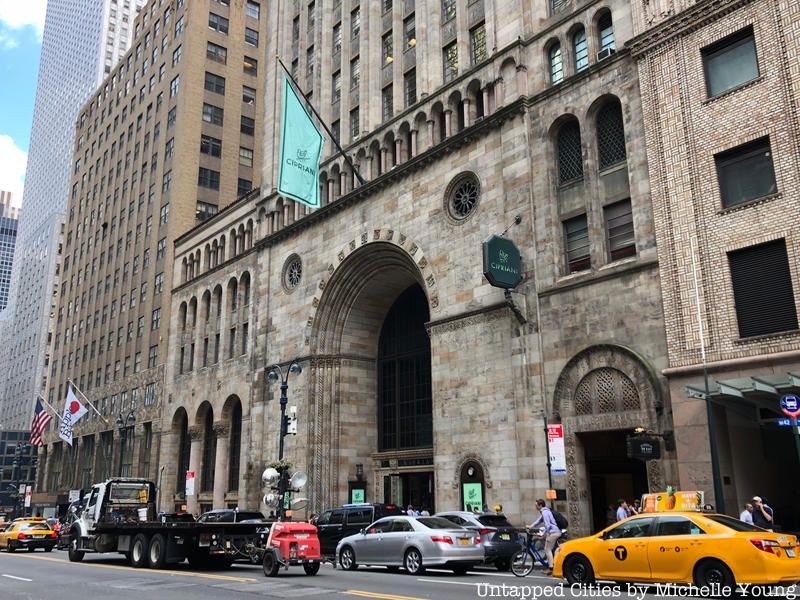
The Bowery Savings Bank then moved its headquarters in 1920 to 42nd Street in a building also designed by York and Sawyer. The ground floor and lobby is now Cipriani’s.
Gotham Hall
Philip Sawyer of York and Sawyer also designed the Greenwich Savings Bank building on Broadway and 36th Street, which is now Gotham Hall. The interior rotunda with its coffered dome is particularly impressive.
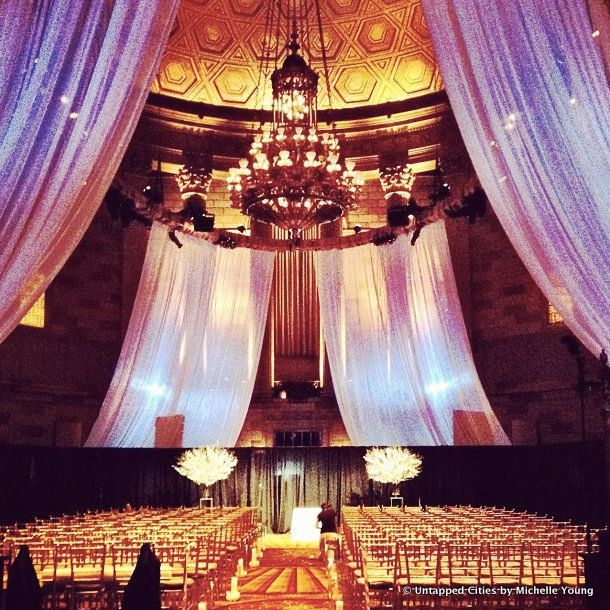
Get in touch with the author @YiinYangYale.
Subscribe to our newsletter